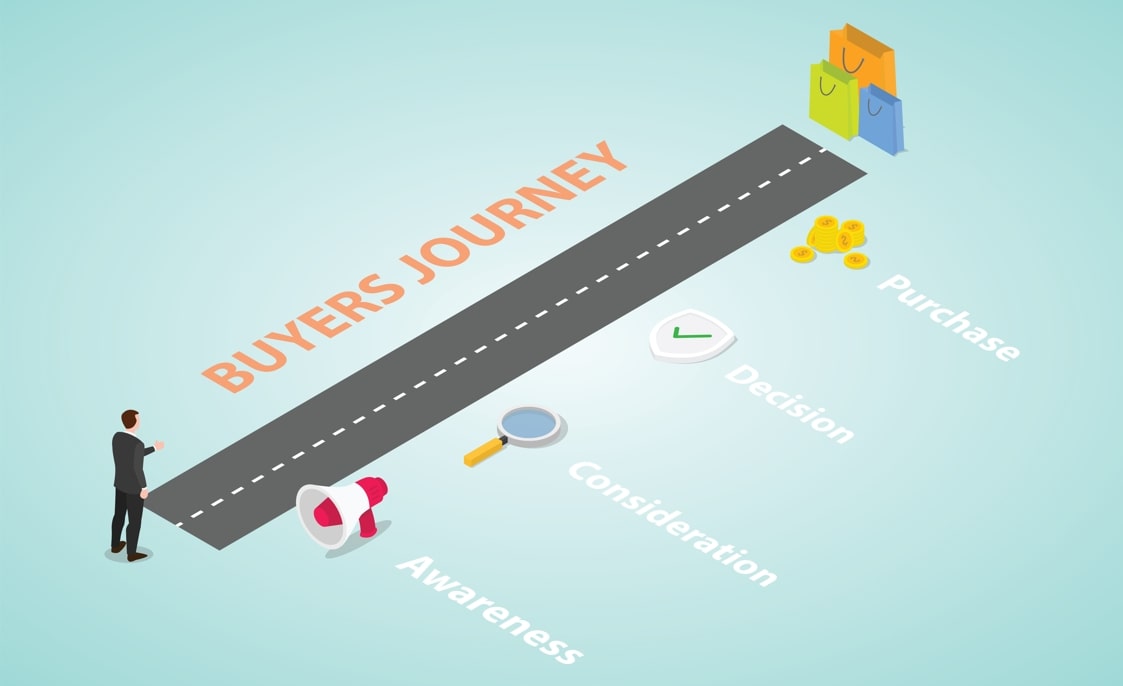Customer journey mapping is a powerful tool that helps businesses visualize and optimize the way their customers interact with them. It provides a comprehensive view of the customer experience, from initial awareness through to post-purchase, enabling businesses to align their strategies with customer expectations.
By mapping out these interactions, businesses can pinpoint opportunities to improve customer satisfaction, enhance engagement, and ultimately increase conversions. Journey mapping gives you the ability to proactively address customer pain points, streamline touchpoints, and offer a seamless, personalized experience. Why does this matter? Because the better the experience you create, the more likely customers will stay loyal, spread positive word-of-mouth, and advocate for your brand.
In this article, we’ll walk you through the core components of customer journey mapping, why it’s essential, and how you can apply this strategy to your business for measurable improvements in customer experience.
What is customer journey mapping?
Customer journey mapping is the process of visually representing the steps a customer goes through when interacting with a business. This “map” captures every interaction — from discovering a product or service to becoming a repeat customer, and even sharing feedback or advocating for the brand. At its core, customer journey mapping is about understanding and improving the customer experience by focusing on their needs, emotions, and actions at every stage.
A customer journey map is a visual representation that outlines all the interactions a customer has with your brand across multiple touchpoints. It shows how customers move through different stages of their journey, from awareness to consideration, purchase, and beyond. By identifying key touchpoints (like website visits, social media interactions, and customer support calls), businesses can better understand their customers’ paths and refine strategies accordingly.
A customer journey map provides a bird’s-eye view of the customer experience, helping businesses see how customers perceive them at different points along the journey. This holistic view helps in identifying gaps in the customer experience, areas of friction, and key opportunities for improvement.
Journey maps are not just about documenting what happens at each touchpoint, but also about illustrating the emotions and motivations that drive customer behavior. By understanding this, businesses can tailor their interactions, create more engaging experiences, and build stronger relationships with customers.
See SMO in action
Try our solutions with zero commitment
Key components of a customer journey map

There are several key components that make up an effective customer journey map:
- Touchpoints: These are the specific interactions customers have with your brand. Touchpoints include visits to your website, interactions with customer support, email communications, and social media engagements. Mapping these touchpoints helps you visualize where customers are engaging with your business.
- Stages: The customer journey consists of several stages that represent different phases of the customer’s experience. Typically, these stages include:
- Awareness: The customer first becomes aware of your brand or product.
- Consideration: The customer evaluates your offerings against competitors.
- Purchase: The customer makes a decision and completes a transaction.
- Retention: The business focuses on keeping the customer satisfied and loyal.
- Advocacy: The customer becomes a brand advocate, referring others and creating social proof.
- Goals: Each stage of the journey has specific goals or objectives. These goals could include raising awareness, nurturing leads, converting prospects into customers, or retaining loyal customers. By identifying these goals, businesses can focus on optimizing each stage and improving outcomes across the entire journey.
Why customer journey mapping is important
Customer journey mapping is essential because it provides a structured and visual approach to understanding the complete customer experience. By mapping out every touchpoint, interaction, and stage, businesses can gain deep insights into their customers’ needs, pain points, and expectations. This clarity allows businesses to improve their overall strategy and create more personalized, customer-centric experiences.
Enhances customer experience and satisfaction
When businesses understand how customers move through the different stages of the journey, they can remove friction points and optimize key touchpoints. Mapping helps identify where customers are likely to get stuck, frustrated, or abandon the process, allowing businesses to address these issues and create smoother, more enjoyable interactions. This directly improves customer satisfaction and encourages loyalty.
Optimizes marketing efforts and resources
Customer journey maps also help businesses align their marketing efforts with customers’ real needs at each stage of their journey. By understanding where customers are in the decision-making process (awareness, consideration, purchase, retention), businesses can tailor their messaging and content more effectively, ensuring relevance and increasing the chances of conversion.
Improves cross-functional collaboration
A journey map isn’t just valuable for the marketing team; it’s an essential tool for aligning the entire organization around the customer. Sales, customer service, product development, and other departments can use the journey map to understand how they contribute to the overall customer experience. This helps break down silos, encourages cross-departmental collaboration, and ensures a cohesive strategy at every customer touchpoint.
Increases customer retention and lifetime value
By focusing on the customer’s needs at each stage of the journey, businesses can create more opportunities for retention and increase the customer lifetime value (CLV). Retaining customers and nurturing brand loyalty is far more cost-effective than constantly acquiring new customers. A well-executed customer journey map helps businesses foster long-term relationships, leading to repeat business and more positive word-of-mouth.
Steps to create a customer journey map
Creating a customer journey map requires a structured approach. It’s not about simply plotting out random touchpoints, but about thoroughly understanding the customer’s perspective and their path with your brand. Here’s a step-by-step guide to creating a customer journey map that will enhance your customer experience strategy.

Identifying customer personas and their goals
The first step in creating a customer journey map is identifying your customer personas. These are detailed representations of your ideal customers, based on research and data. You need to understand who your customers are, what motivates them, what challenges they face, and what goals they want to achieve.
Once you’ve identified your personas, define their goals at each stage of the journey. For instance, a potential customer might come across your brand to solve a specific problem. By knowing their goals, you can better tailor your approach and provide value throughout the journey.
Mapping out key touchpoints and stages
Next, outline the key touchpoints — the specific interactions that a customer has with your brand. Touchpoints can include anything from seeing an ad, visiting your website, engaging with customer service, and receiving an email. It’s important to list every place where customers interact with your brand.
In addition, define the stages of the journey. These stages generally include:
- Awareness: The customer first learns about your brand.
- Consideration: The customer explores your product or service in more detail.
- Purchase: The customer makes a buying decision.
- Retention: The customer continues to interact with your brand after the purchase.
- Advocacy: The customer becomes a promoter or advocate for your brand.
Each stage should be carefully mapped out to show how customers move from one stage to the next.
Collecting and analyzing customer feedback for insights
Before finalizing your journey map, it’s crucial to gather data and feedback directly from your customers. Conduct surveys, interviews, or use analytics tools to better understand how customers perceive each stage of their journey. This helps identify pain points and moments of delight, which will inform how you adjust your strategy.
Customer feedback can be invaluable in determining what changes need to be made to optimize the customer experience. Additionally, this information ensures that your map aligns with actual customer behavior rather than assumptions.
Creating a visual representation of the journey
The next step is to create a visual representation of the customer journey. This could be a simple diagram or a more elaborate flowchart. The key is to organize the touchpoints, stages, and customer insights into a clear, easy-to-understand visual format. This map should provide a bird’s-eye view of the entire customer experience and highlight areas for improvement.
Use software tools like Lucidchart, Microsoft Visio, or online platforms designed for customer journey mapping to make this process easier.
Updating and refining the map over time
Customer journey maps are not static documents. As your business evolves and as customer behaviors shift, your journey map will need to be updated. Regularly refine your journey map based on ongoing customer feedback, new trends, or changes in the marketplace. The more dynamic your map is, the more useful it will be in identifying current opportunities and addressing emerging challenges.
See SMO in action
Try our solutions with zero commitment
How to utilize and apply customer journey mapping to your business
Once you’ve created a customer journey map, the next step is to effectively utilize it to drive business outcomes. A customer journey map is more than just a diagram — it’s a tool that can be integrated into every aspect of your operations to enhance the customer experience and align your organization toward customer-centric goals. Here’s how to apply it across various touchpoints:
Align your teams around the customer experience
One of the most significant ways to utilize a customer journey map is to ensure that every department within your organization understands the customer’s experience. By making the map a central part of cross-functional collaboration, you can align marketing, sales, customer service, and product development teams.
For example:
- Marketing teams can tailor content and campaigns to meet customer needs at each stage, improving lead nurturing and conversion rates.
- Sales teams can use the map to understand customer pain points and how to position products more effectively during the consideration and purchase stages.
- Customer service can focus on proactive engagement to prevent dissatisfaction and address issues in the retention phase.
By ensuring that everyone in your organization is on the same page, the customer experience remains consistent across all touchpoints.
Personalize customer interactions at each stage

The customer journey map allows you to personalize experiences at every stage of the journey. By understanding the needs and goals of your customers in different stages, you can create tailored content and offers. For example:
- At the Awareness stage, content such as blog posts, videos, or social media ads can introduce your brand and educate customers about their problems.
- At the Consideration stage, product demos, customer testimonials, and case studies can help build trust.
- During the Purchase stage, offering discounts or limited-time promotions can push customers toward making the final decision.
This kind of personalization increases the likelihood of conversions and ensures customers feel heard and valued.
Identify and eliminate pain points
Mapping out the customer journey helps you identify friction points — moments when customers may experience frustration or confusion. For example, maybe your website has a complicated checkout process, or customers often abandon their cart. Identifying these pain points allows you to streamline processes and improve the experience, ensuring customers continue moving forward in the journey.
Improving areas where customers experience delays, frustration, or abandonment not only boosts conversion rates but also enhances overall satisfaction, contributing to stronger customer loyalty.
Measure and optimize your customer experience
Once you’ve mapped the journey, it’s time to continuously monitor and optimize it. Use customer feedback, data, and analytics to evaluate how well each stage is performing. Are customers moving smoothly through each stage? Are they dropping off at certain touchpoints? These insights can inform improvements, whether it’s optimizing content, adjusting communication, or improving your customer service protocols.
Customer journey mapping should be an iterative process, evolving as customer behaviors, preferences, and needs change over time. Regularly updating your map based on new data helps you stay aligned with customer expectations and ensures your business stays competitive.
Customer journey mapping vs other CRM-related strategies you should learn about
While customer journey mapping is an essential tool for understanding and optimizing the customer experience, it’s not the only strategy businesses should employ. Below, we’ll compare journey mapping to other CRM-related strategies and explain when and how each should be used.
Customer segmentation
Customer segmentation involves grouping your customers based on shared characteristics such as demographics, behavior, purchasing habits, or lifecycle stage. This is particularly useful for targeting specific groups with personalized marketing campaigns.
- Journey mapping is focused on understanding the steps a customer takes in their relationship with your brand, while segmentation is about understanding the different types of customers you have and targeting them accordingly.
- How to apply: Use journey mapping to identify the key touchpoints for different segments, and tailor your messaging for each group based on their position in the lifecycle.
CRM systems and automation

CRM systems help manage customer relationships by storing information, tracking interactions, and automating communication. They can provide a wealth of data on your customers and streamline sales and service operations.
- Journey mapping can be enhanced by integrating CRM data. For example, your journey map can be informed by CRM insights that highlight customer behavior at each stage. CRM automation tools can then be used to deliver personalized content or follow-ups at the appropriate touchpoints in the journey.
- How to apply: Sync journey mapping with CRM data to trigger automated workflows at key moments in the customer’s journey, such as sending follow-up emails or offering incentives after a certain period of inactivity.
Sales funnels
Sales funnels represent the journey of prospects as they move through stages of awareness, interest, and decision-making. While this concept overlaps with customer journey mapping, sales funnels tend to focus more on driving conversions and sales.
- Journey mapping offers a broader view, encompassing the entire customer experience beyond just sales, including post-purchase behavior like retention and advocacy.
- How to apply: Use customer journey mapping to deepen the insights from your sales funnel. While the funnel focuses on the conversion process, journey mapping captures a more holistic view of the entire relationship with your brand, including customer service and retention.
Net promoter score (NPS)
NPS is a metric used to measure customer loyalty and satisfaction by asking how likely customers are to recommend your brand to others. It can provide valuable feedback about the customer experience.
- Journey mapping informs NPS by revealing where customers are most likely to feel dissatisfied or delighted, helping to predict their likelihood of recommending your brand.
- How to apply: Use NPS to validate the insights you gain from customer journey mapping. For example, if NPS scores drop at a certain stage of the journey, it indicates a need for optimization in that area.
Customer experience (CX) metrics
Customer experience metrics track the overall satisfaction and loyalty of your customers. While journey mapping focuses on the steps and touchpoints, CX metrics measure the quality of the experience at each stage.
- Journey mapping can guide where you need to measure customer satisfaction more effectively. It also helps you identify specific areas in the journey that may impact overall customer experience.
- How to apply: Use journey mapping to uncover areas where CX metrics should be measured, then continuously refine and optimize the experience based on those insights.
Conclusion
Customer journey mapping is not just a visual tool — it is a strategic approach to understanding and improving the entire customer experience. By mapping out the various stages of a customer’s interaction with your brand, you gain valuable insights that help you optimize each touchpoint, foster deeper engagement, and ultimately increase customer loyalty and lifetime value.
While creating and utilizing a customer journey map requires time, resources, and commitment, the payoff is significant: a more personalized, streamlined experience that drives better business outcomes. Whether you’re looking to improve conversion rates, enhance customer satisfaction, or build long-term relationships, customer journey mapping is a foundational practice that aligns your business objectives with your customers’ needs.
Remember, this process is iterative. It requires constant monitoring, feedback, and refinement. By embracing the customer journey mapping framework, your business will be better positioned to adapt to the evolving needs of customers, stay competitive, and continue to grow in a customer-centric way.
Start mapping your customers’ journeys today and take actionable steps toward optimizing the experience across all touchpoints. Your customers, and your business, will thank you for it.


